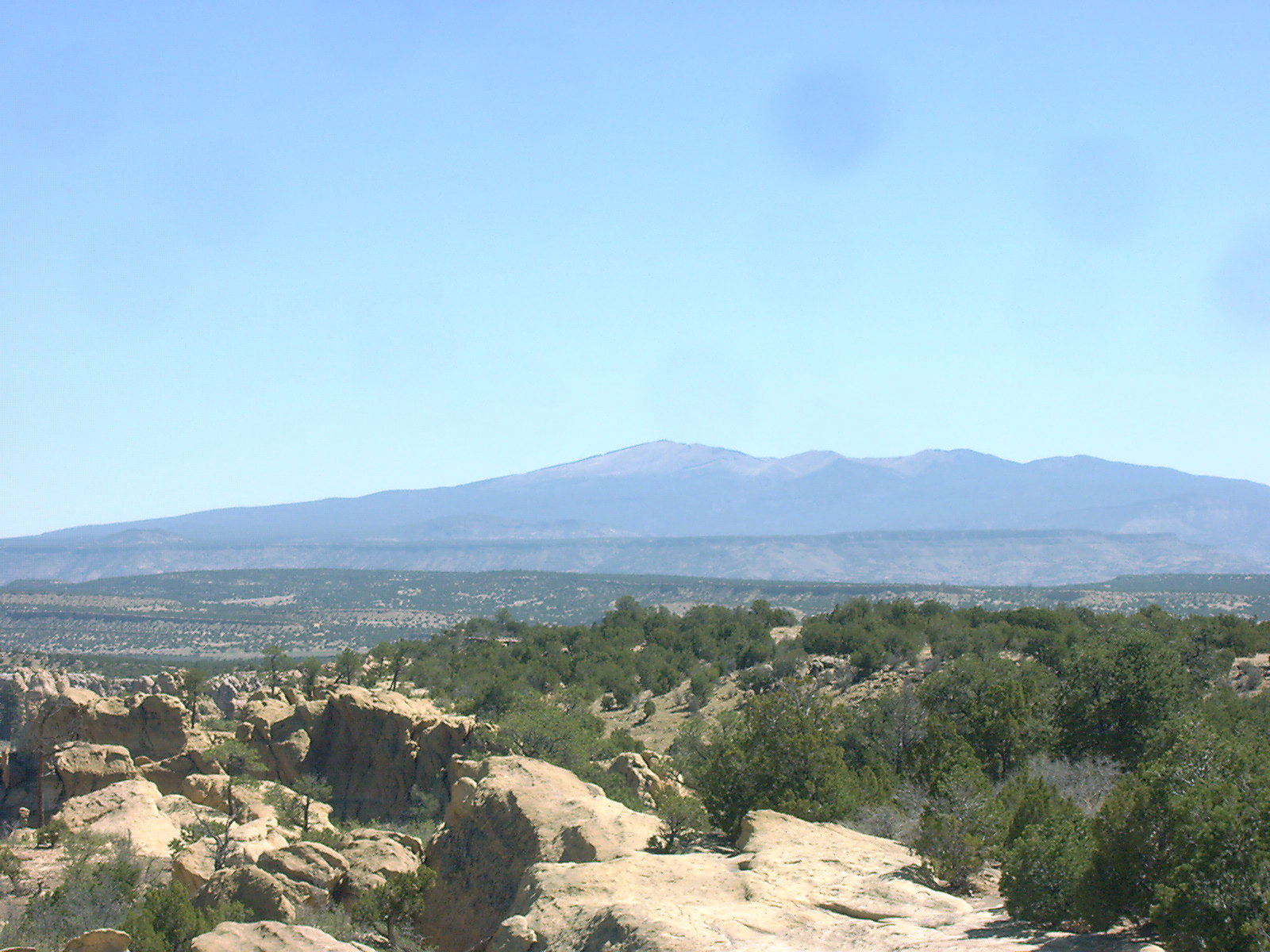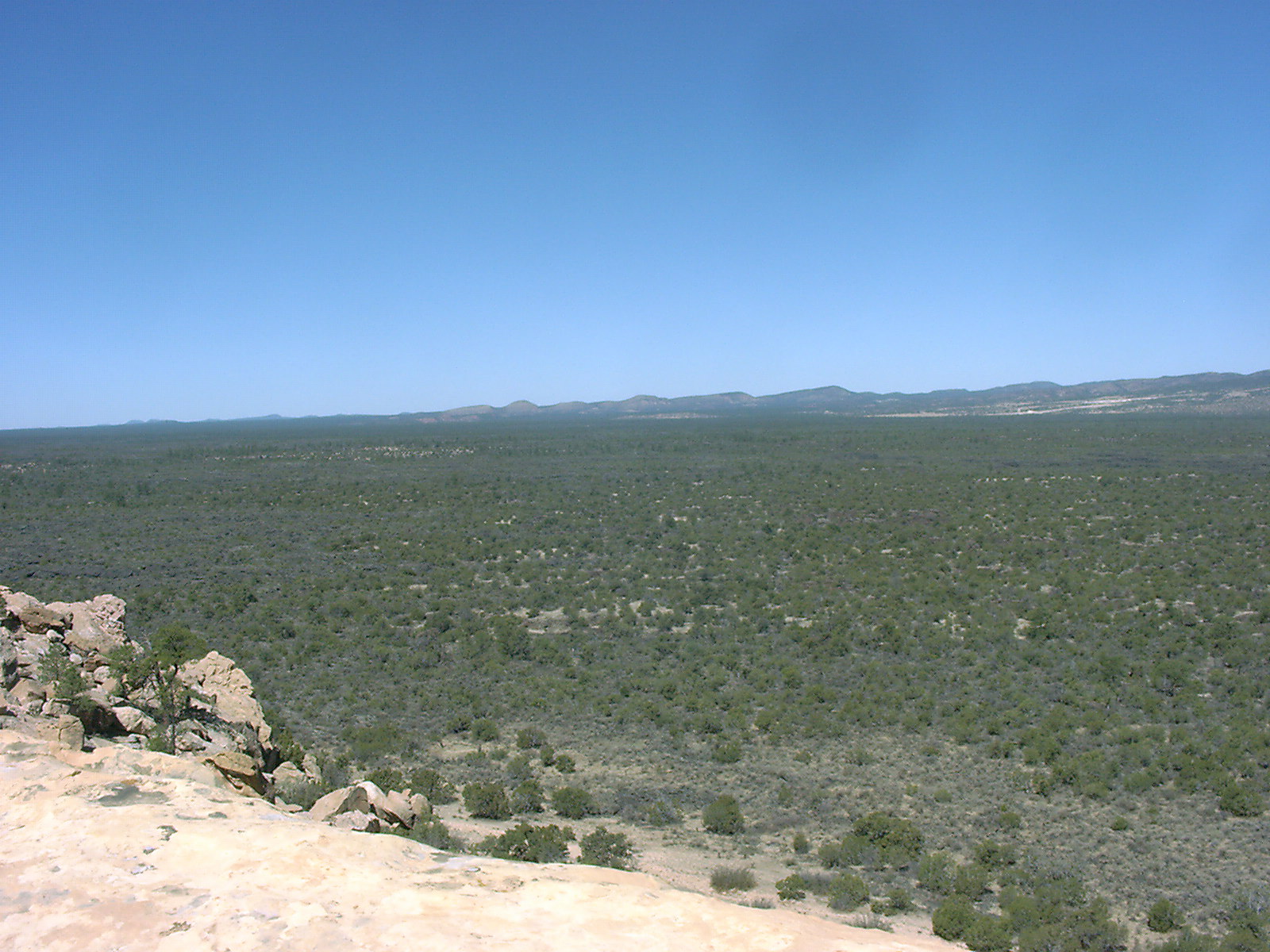Geography and Environment
All of the sites sampled in 2006 are within a day's drive of Grants, NM, in the northwestern corner of the state. The topography of this region varies considerably. Between Gallup and Grants lie the Zuni Mountains, where the students sampled peeled trees (publication forthcoming) in the Cibola National Forest. To the south of Grants, the topography flattens out into broad plains dotted with wide mesas. In this area, the most significant geographical features are the extinct volcano commonly known as Mount Taylor, and the associated lava fields called "El Malpais". In the Cebolla Wilderness of the BLM's El Malpais Conservation Area, the students sampled two forked-pole hogans and a historic homestead. Both the hogan local environment and the homestead local environment are best understood within the broader context of northwestern New Mexico and the more specific context of the Cebolla Creek watershed.
Northwestern New Mexico
Geology Climate Ecology
Major Topographic Features
Geology
Climate
Northwestern New Mexico receives an average 15 inches of rainfall annually. Most of the rainfall comes from severe thunderstorms during the summer monsoon season (July, August, and September). The rest of the precipitation generally occurs as snow during the winter.
The area experiences a wide range of temperatures, not only seasonally, but also daily. Winter temperatures in the daytime range from 30-50 degrees Fahrenheit, plunging below -20 at night. Summer temperatures have a daytime range from 80-100 degrees, and a nighttime range of 40-60 degrees.
Ecology
BLM’s Cebolla Wilderness, part of the El Malpais National Conservation Area, includes approximately 63,000 acres of forested rimrock country east of NM 117.
Cebolla Creek Watershed
Hogan Local Environment
geological context?
drainage?
climate?
vegetation?
Cebolla Cabin Homestead Local Environment
geological context? drainage? climate? vegetation? The cabin is on a (facing?) slope, overlooking an arroyo with clearings and earth dams. |
Return to Top Return to 2006 Projects Page Return to Dendrochronology Fieldschool Webpage Return to LTRR homepage

